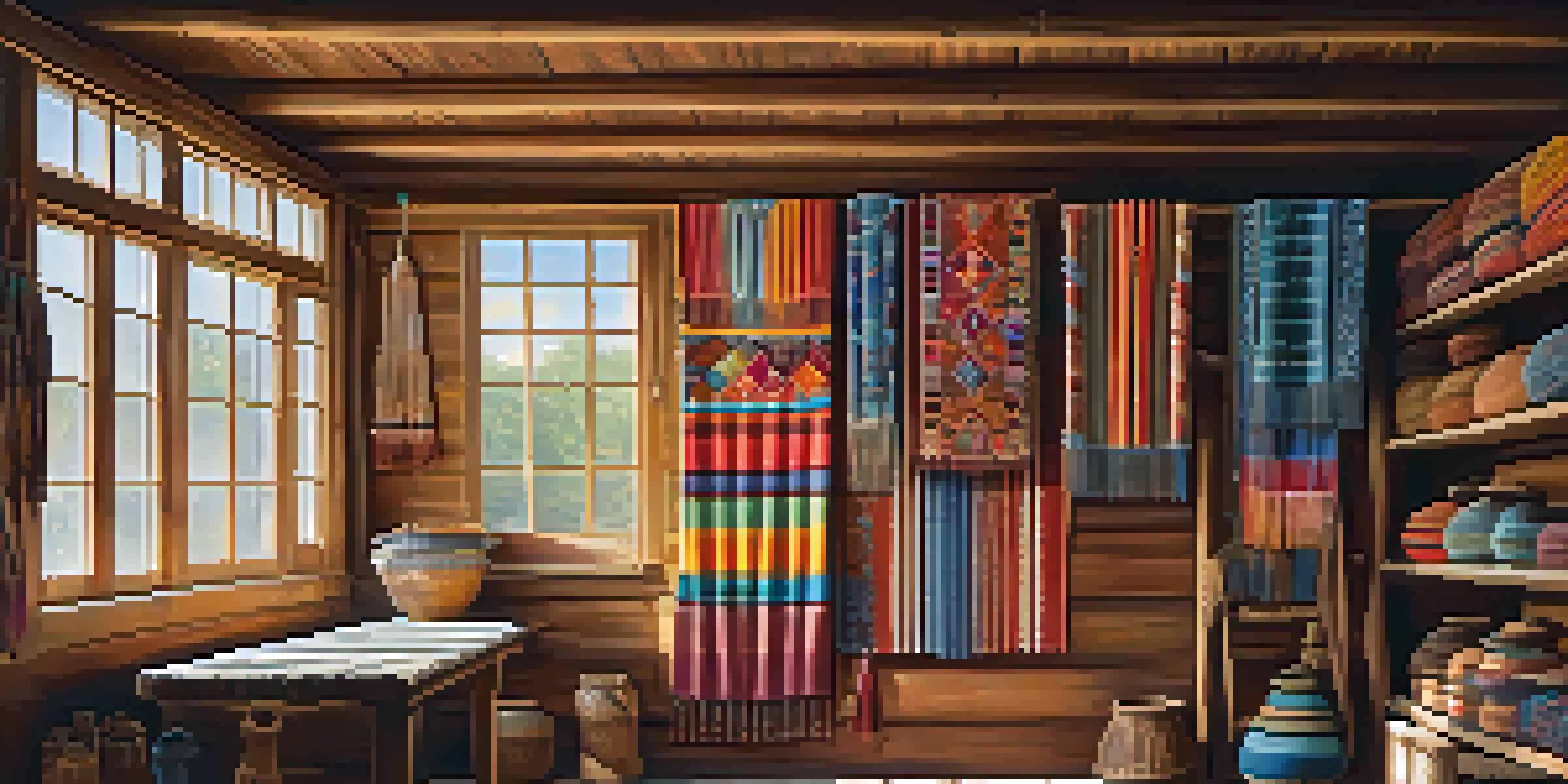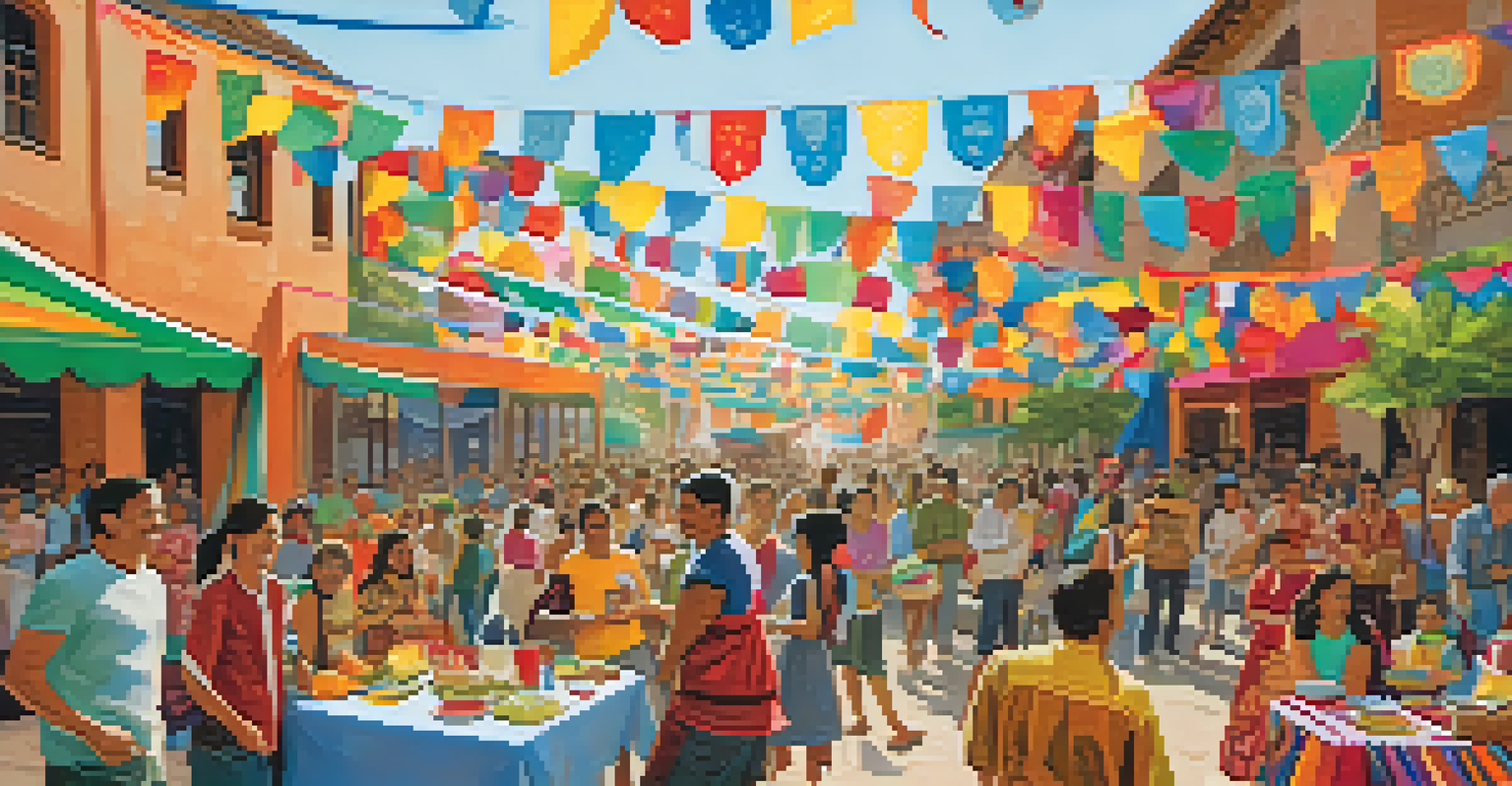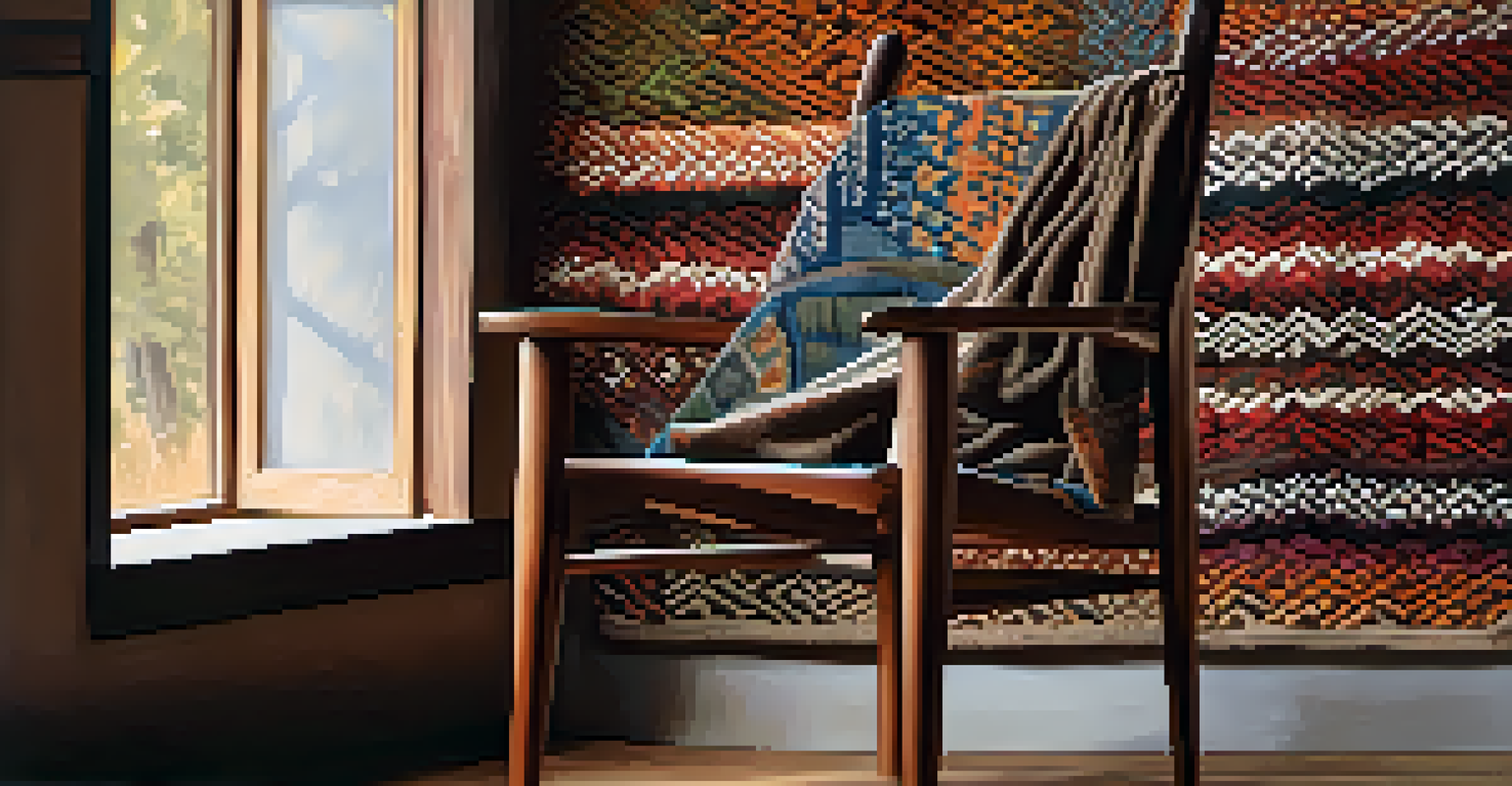Folk Art and Its Significance in Cultural Identity

Defining Folk Art and Its Diverse Forms
Folk art encompasses a wide range of creative expressions that are often rooted in cultural traditions. This can include crafts, textiles, pottery, and even music or dance, varying significantly from one community to another. It is typically created by artisans who are not formally trained, making it a genuine reflection of everyday life and local customs. For instance, the intricate patterns found in Navajo rugs tell stories of their history and beliefs.
Folk art is a way of connecting with the past, a way of expressing identity and culture.
What sets folk art apart is its community-based nature; it’s often created for functional purposes rather than for commercial sale. This distinction allows folk artists to maintain authenticity, showcasing their unique cultural narratives and values. Whether it’s the vibrant colors in Mexican papel picado or the delicate carvings of African woodwork, each piece tells a story intrinsic to its origin.
In essence, folk art serves as a bridge that connects generations, allowing cultural wisdom and tradition to be passed down. It embodies the collective identity of a community, making it a vital element in understanding cultural heritage.
Folk Art's Role in Cultural Identity Formation
Cultural identity is often shaped by the traditions, beliefs, and artistic expressions of a community. Folk art plays a crucial role in this process, acting as a canvas upon which cultural narratives are painted. When people engage with folk art, they are not just appreciating aesthetics; they are connecting with the values and histories of their ancestors.

For example, the vibrant masks used in African tribal ceremonies often signify more than mere decoration; they represent ancestral spirits and community values. By participating in the creation or appreciation of such art forms, individuals reinforce their sense of belonging and identity within their cultural group. This collective experience fosters a deeper understanding of one's heritage.
Folk Art Preserves Cultural Heritage
Folk art serves as a vital tool for preserving cultural traditions, ensuring they are passed down through generations.
Moreover, in a globalized world where cultures can sometimes feel diluted, folk art provides a means of preserving and celebrating unique identities. It encourages communities to share their stories and traditions, ensuring that they remain alive and relevant for future generations.
The Emotional Connection to Folk Art
Folk art often evokes strong emotional responses, connecting individuals to their heritage in profound ways. When people see familiar motifs or patterns, it can trigger memories of family gatherings, festivals, or community events. This emotional resonance helps reinforce personal and collective identities, making folk art an integral part of life experiences.
Art is not what you see, but what you make others see.
Consider the warmth of a handwoven blanket that has been passed down through generations. Each thread carries not just the artistry of the weaver, but also the stories and love of those who cherished it. Such objects become cherished heirlooms, serving as a tangible link to one's past and cultural roots.
This emotional connection also extends to the act of creation. Engaging in folk art practices allows individuals to express their feelings, experiences, and cultural pride, providing a therapeutic outlet that fosters personal identity through creativity.
Preserving Cultural Heritage Through Folk Art
As globalization spreads, many traditional practices face the threat of extinction. Folk art serves as a vital tool for preserving cultural heritage, keeping traditions alive in an ever-evolving world. Communities actively engage in revitalizing folk art forms, ensuring that they are passed on to future generations.
For instance, workshops and festivals celebrating folk art provide platforms for artisans to showcase their skills and educate others about their traditions. These events not only promote awareness but also empower individuals to take pride in their cultural identities. By participating in such celebrations, young people can learn the significance of their heritage through hands-on experiences.
Emotional Connections to Folk Art
Folk art evokes strong emotional responses, linking individuals to their heritage and reinforcing personal and collective identities.
Additionally, modern technology plays a role in preservation. Social media and online platforms allow folk artists to share their crafts and stories with a global audience, fostering appreciation and understanding of diverse cultures. This blend of tradition and innovation ensures that folk art remains relevant and vital in today’s society.
Folk Art as a Medium for Social Change
Folk art is not just about preserving culture; it can also be a powerful tool for social change. Many artists use their craft to address social issues, reflect on community struggles, and inspire dialogue. By weaving contemporary themes into traditional art forms, they create pieces that resonate with both local and global audiences.
For example, murals in urban areas often depict the challenges faced by marginalized communities, turning walls into canvases for social commentary. These artworks spark conversations and encourage collective action, reminding viewers of the power of creativity in advocating for change. In this way, folk art becomes a voice for the voiceless.
Moreover, by highlighting social issues through folk art, artists can foster empathy and understanding among different cultural groups. This connection can lead to greater solidarity, as people recognize shared struggles and triumphs, ultimately reinforcing the importance of community and identity.
The Global Influence of Folk Art
Folk art transcends geographical boundaries, influencing cultures around the world. As communities interact through travel, trade, and technology, folk art often takes on new forms, blending traditional practices with contemporary styles. This fusion creates a rich tapestry of artistic expression that reflects the interconnectedness of our global society.
Take, for instance, the way traditional Japanese pottery techniques have inspired modern ceramicists worldwide. Artists incorporate these age-old methods while adding their unique twists, resulting in innovative and culturally rich works. Such exchanges highlight how folk art can evolve while honoring its roots.
Folk Art as a Catalyst for Change
Many folk artists use their craft to address social issues, creating pieces that inspire dialogue and advocate for social change.
This global influence also reminds us of the shared human experience, fostering appreciation for diverse cultures. By exploring folk art from different regions, we can learn about various perspectives and histories, enriching our understanding of what it means to be part of a global community.
Celebrating Folk Art in Contemporary Society
In today’s fast-paced world, there’s a growing appreciation for folk art as people seek authenticity and connection. This revival is evident in the popularity of craft fairs, cultural festivals, and art exhibitions that showcase traditional artisans. Such events not only celebrate folk art but also encourage the transmission of skills and stories between generations.
Many contemporary artists are reimagining folk art by incorporating modern themes and techniques, ensuring its relevance in today's context. This approach not only honors tradition but also invites new audiences to engage with cultural narratives. For example, contemporary textile artists may use traditional weaving techniques to create modern fashion pieces that resonate with younger generations.

Ultimately, celebrating folk art fosters a sense of community and belonging. As people come together to appreciate and learn about their cultural heritage, they reinforce their identities and continue the cycle of storytelling that is vital for the survival of their traditions.